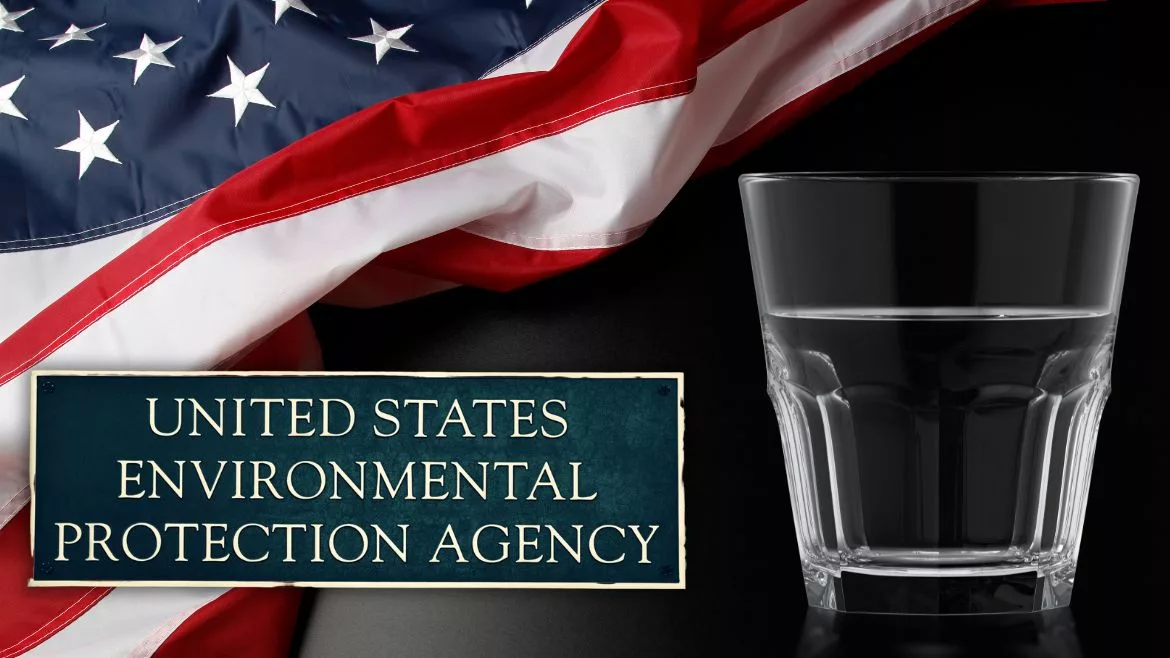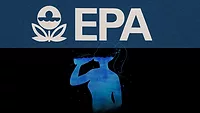News
EPA Finalizes Rule Setting PFAS Limits for Drinking Water
Limits from 4.0 to 10 parts per trillion set for five PFAS.

The Environmental Protection Agency (EPA) issued a final rule that sets drinking water standards from 4.0 parts per trillion to 10 parts per trillion for five individual per-and polyfluoroalkyl (PFAS) substances, including PFOA, PFOS, PFNA, PFHxS, and HFPO-DA (also known as “GenX Chemicals”).
The individual PFAS limits set in the final rule, issued on April 10, 2024, depend on the chemicals. The rule sets limits for the five individual PFAS chemicals and mixtures of any two or more of four PFAS: PFNA, PFHxS, PFBS, and “GenX chemicals.”
Under the new rule, all public water systems have three years to complete their initial monitoring for these chemicals, and they must inform the public of the level of PFAS measured in their drinking water, the EPA says. Where PFAS is found at levels that exceed these standards, those systems must implement solutions to reduce PFAS in their drinking water within five years, the agency says. Additional aspects of the final PFAS drinking water standards rule are:
For PFOA and PFOS, the EPA is setting a “maximum contaminant level goal” (MCLG), a non-enforceable health-based goal at zero according to the EPA. The MCLG reflects the latest science showing no exposure level to these contaminants without risk of health impacts, including certain cancers.
the EPA sets enforceable “maximum contaminant levels” (MCLs) at 4.0 parts per trillion for PFOA and PFOS, individually, which will reduce exposure from those PFAS in drinking water to the lowest levels feasible for effective implementation, the EPA says.
For PFNA, PFHxS, and “GenX Chemicals,” the EPA sets the MCLGs and MCLs at ten parts per trillion.
Because PFAS can often be found together in mixtures, and research shows these mixtures may have combined health impacts, the EPA is also setting a limit for any mixture of two or more of the following PFAS: PFNA, PFHxS, PFBS, and “GenX Chemicals.”
The EPA says that between six and 10 percent of the 66,000 public drinking water systems subject to this rule may have to take action to reduce PFAS to meet these new standards, achievable using a range of available technologies and approaches, including granular activated carbon, reverse osmosis, and ion exchange systems. the EPA adds that it will work closely with state co-regulators to support water systems and local officials in implementing this rule.
As part of the effort to work with states, the EPA says it will allocate $1 billion through the Infrastructure Investment and Jobs Act (IIJA), also known as the Bipartisan Infrastructure Law (Public Law No. 117-58), to help states and territories implement PFAS testing and treatment at public water systems and to help owners of private wells address PFAS contamination.
That funding is part of a $9 billion investment through IIJA to help communities with drinking water impacted by PFAS and other emerging contaminants. The EPA says this is “the largest-ever investment in tackling PFAS pollution.” The EPA adds that an additional $12 billion is available through the Bipartisan Infrastructure Law “for general drinking water improvements, including addressing emerging contaminants like PFAS.”
Additionally, the EPA says it has a nationwide water technical assistance program to help small, rural, and disadvantaged communities access federal resources by working directly with water systems to identify challenges like PFAS, develop plans, build technical, managerial, and financial capacity, and apply for water infrastructure funding.
PFAS are widely used, long-lasting chemicals, the components of which break down very slowly and are found in the blood of people and animals all over the world. On February 1, 2024, the EPA announced it is proposing two rules that target PFAS pollution across the U.S., with one rule modifying the definition of hazardous waste as it applies to cleanups at permitted hazardous waste facilities. This modification would ensure that the EPA’s regulations reflect the authority of the the EPA and authorized states to require the cleanup of the full range of substances intended under the Resource Conservation and Recovery Act (RCRA), including emerging chemicals of concern, such as PFAS, that may present substantial hazards, at permitted facilities.
The second rule would amend the EPA regulations authorized by RCRA to add multiple PFAS compounds as hazardous constituents. According to the EPA, these PFAS would be added to the list of substances identified for consideration in facility assessments and, where necessary, further investigation and cleanup through the corrective action process at hazardous waste treatment, storage, and disposal facilities.
Those proposed rules have facilitated strong concerns by municipalities and water utilities that they would be solely responsible for the costs of conducting PFAS cleanup from water systems, and those costs would be passed on to consumers.
“Drinking water contaminated with PFAS has plagued communities across this country for too long,” said
EPA Administrator Michael S. Regan. “That is why President Biden has made tackling PFAS a top priority, investing historic resources to address these harmful chemicals and protect communities nationwide. Our PFAS ‘strategic roadmap’ marshals the full breadth of the EPA’s authority and resources to protect people from these harmful ‘forever chemicals.’ Today, I am proud to finalize this critical piece of our roadmap, saving thousands of lives and helping ensure our children grow healthier.”
The EPA says it will host a series of webinars to inform the public, communities, and water utilities about the final PFAS drinking water regulation.
Click here to read the announcement.
Looking for a reprint of this article?
From high-res PDFs to custom plaques, order your copy today!






